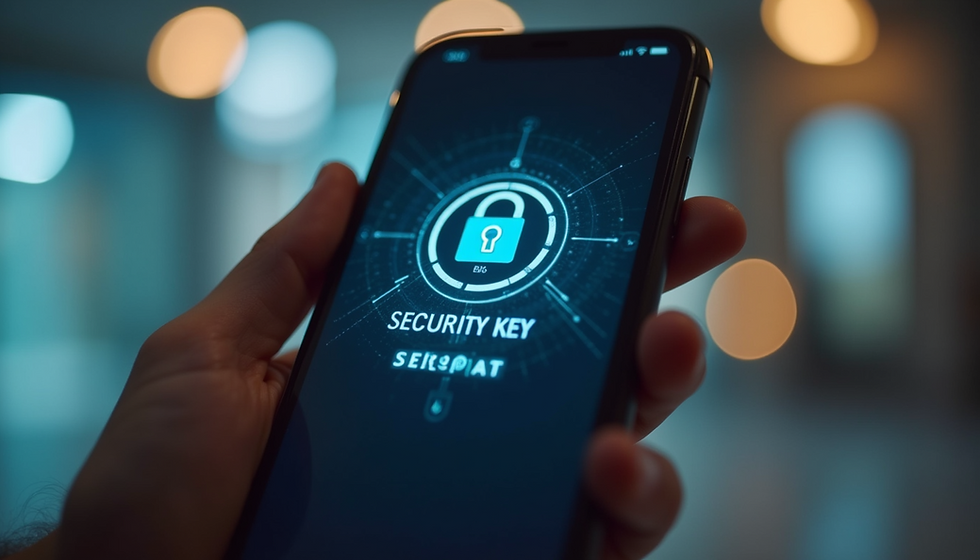Comparing Secure Authentication Options: Exploring Passwordless Authentication Methods
- tech012
- 4 days ago
- 4 min read
In today’s digital world, securing user access is more important than ever. Passwords have long been the standard, but they come with many challenges. Weak passwords, reuse across sites, and phishing attacks make traditional login methods risky. That’s why many businesses and developers are turning to secure authentication options that don’t rely on passwords. These new methods offer better security and smoother user experiences.
Let’s dive into the most popular secure authentication options available today. I’ll break down how they work, their pros and cons, and practical tips for implementation. By the end, you’ll have a clear understanding of which method might fit your needs best.
Understanding Secure Authentication Options
Secure authentication options go beyond just typing a password. They use something you have, something you are, or a combination of factors to verify identity. Here are some common types:
Biometric Authentication: Uses fingerprints, facial recognition, or iris scans.
One-Time Passwords (OTP): Temporary codes sent via SMS, email, or authenticator apps.
Hardware Tokens: Physical devices that generate or store authentication codes.
Magic Links: Email links that log users in without a password.
Push Notifications: Approve login attempts via a mobile app prompt.
FIDO2/WebAuthn: Standards that enable passwordless logins using hardware keys or biometrics.
Each option has unique strengths. For example, biometrics are fast and user-friendly but require compatible devices. OTPs are easy to implement but can be intercepted if not secured properly. Hardware tokens offer strong security but add cost and complexity.

When choosing a secure authentication option, consider your users’ devices, security needs, and ease of use. The goal is to reduce friction while keeping accounts safe.
Comparing Popular Secure Authentication Options
Let’s compare some of the most widely used methods in terms of security, usability, and implementation effort.
Biometric Authentication
Security: High. Biometrics are unique to each person and hard to fake.
Usability: Excellent. Users just scan their fingerprint or face.
Implementation: Moderate. Requires device support and integration with biometric APIs.
Biometrics are great for mobile apps and modern devices. However, fallback options are necessary for users without compatible hardware.
One-Time Passwords (OTP)
Security: Medium. OTPs add a layer beyond passwords but can be vulnerable to SIM swapping or phishing.
Usability: Good. Users receive a code via SMS or app.
Implementation: Easy to moderate. Many services offer OTP APIs.
OTPs are a popular second factor but less ideal as a sole authentication method.
Hardware Tokens
Security: Very high. Physical tokens are difficult to duplicate or steal remotely.
Usability: Moderate. Users must carry the token.
Implementation: Complex. Requires purchasing and managing tokens.
Hardware tokens suit high-security environments but may deter casual users.
Magic Links
Security: Medium. Links are sent to verified email addresses.
Usability: Excellent. Users click a link to log in.
Implementation: Easy. Requires email infrastructure.
Magic links simplify login but depend on email security and timely delivery.
Push Notifications
Security: High. Users approve login attempts on their device.
Usability: Excellent. One tap to approve.
Implementation: Moderate. Requires mobile app and push infrastructure.
Push notifications combine security and convenience, ideal for mobile-first services.
FIDO2/WebAuthn
Security: Very high. Uses public key cryptography and hardware authenticators.
Usability: Excellent. Passwordless and fast.
Implementation: Moderate to complex. Requires support for standards and hardware.
FIDO2 is the future of secure authentication, enabling truly passwordless experiences.

How to Choose the Right Secure Authentication Option
Choosing the best method depends on your specific needs. Here are some factors to consider:
User Base: What devices do your users have? Are they mostly mobile or desktop?
Security Requirements: How sensitive is the data you protect?
User Experience: Will users accept carrying tokens or using biometrics?
Implementation Resources: Do you have the technical skills and budget?
Regulatory Compliance: Are there industry standards or laws to follow?
For many businesses, combining methods offers the best balance. For example, use biometrics or FIDO2 for primary login and OTP as a backup.
If you want to explore more about passwordless authentication methods, OnzAuth offers great insights and solutions to help you implement these options quickly and securely.
Practical Tips for Implementing Secure Authentication
Implementing secure authentication can seem daunting, but these tips will help you get started smoothly:
Start Small: Pilot with a subset of users before full rollout.
Educate Users: Explain benefits and how to use new methods.
Provide Fallbacks: Always have backup options like email or SMS recovery.
Use Standards: Adopt protocols like FIDO2 and WebAuthn for compatibility.
Monitor and Update: Keep an eye on security trends and update your methods regularly.
Remember, the goal is to make authentication both secure and user-friendly. Don’t sacrifice one for the other.
Looking Ahead: The Future of Secure Authentication
The future is clearly moving towards passwordless experiences. Advances in biometrics, hardware security, and standards like FIDO2 are making it easier than ever to ditch passwords. This shift not only improves security but also boosts user satisfaction and reduces support costs.
Businesses that adopt these secure authentication options early will gain a competitive edge. They’ll offer seamless login experiences that users appreciate and trust.
If you want to stay ahead, explore solutions like OnzAuth that specialise in helping businesses implement passwordless authentication quickly and effectively. It’s a smart move for any website or app looking to improve security and user experience.
Secure authentication is no longer optional - it’s essential. By understanding and comparing the available options, you can choose the best fit for your platform. Embrace the change and make login easier and safer for everyone.



Comments